
In the River KATSURA --Vol.94--
A Snowstorm
On the opening day, March 1st, in 1973, I headed for the River Katsura, instead of the River Oshino. I changed the river because I learned in the previous year that yamame trout frequently made rises there when light snow was whirling from the clear sky in early April. Well, I usually fished the River Oshino early in the daytime on the opening day for many years, checking how the river had changed during the close season, which points had become better, which ones worse and watched the whole part of the river to estimate my catch in the coming season. Now, if I got no catch in the River Katsura, I would move to the River Oshino soon. So I would have no worry to kill the time. Thinking in this way, I arrived at Asumi Bridge about 9 a.m.I was not sure whether it was statistically correct but I felt that it had been rarely fine on March 1st. The weather got worse from the last day of February and it was stormy on the opening day in several previous years. It was not stormy this year but strong wind blew from the morning. Fortunately the wind died down when I came near to the River Katsura but the dark clouds covered the sky. I parked by the bridge and looked around the river, standing on the embankment. Colourless scenery like a monochrome spread farther downstream. There was no angler on the opening day!
I saw the same scenery in early April of the previous year, when it seemed unlikely that fish would break the surface but actually many fish broke the surface. This year I came a month earlier but I expected some response from the fish. Nevertheless, cold weather outside the car made me a little bit nervous. I thought that it would be better to start fishing as soon as possible. I picked up a rod of 6ft. for mountain streams and put No.4 line to the guide, size 4X leader of 6ft. to the line end and a little dry fly to the leader tip.

A tributary of the River Katsura on the opening day in 1976. On snowy days fish were mainly caught in the daytime.
The little fly was a lovely one named Lunn’s Particular. I had first dressed it in the previous autumn. As it had a hackle cape, which was very rare in those days, I had great difficulty in dressing a small size (size 14) of that dry fly. But its first performance made me admire its efficiency. Then I was crazy about the spinner type fly. I want to use this fly in the River Katsura! I had been waiting for the day to come because I never forgot my bitter experience of setting the hook to no fish again and again in the previous year.
One thing worried me. I wondered whether I dressed Lunn’s Particular properly. The pattern list said that its body should be wound by hackle stalk of RIR (Rhode Island Red). I dressed my fly, following the direction by W.J.Lunn but I had no confidence. Fortunately, my worry disappeared the next year when I visited Britain and asked my question to Mr. John Veniard. (See Vol.11)
I prepared myself for fishing. It was very easy. I wore a pair of boots, instead of waders, and a waistcoat both in this part of the River Katsura and the River Oshino, my next destination. I wanted to cast the fly immediately but watched the river condition first. I walked 100m downstream on the embankment. There was nothing particular except for low water.
I walked to my car to start fishing from the lower reaches of the barrier, just like the previous year. I saw a hazy sky to the windward and then snow whirling. Snow fell from the direction of Mt. Fuji as usual. It was not thin snow from the clear sky but real snow. When I returned to my car Mt. Fuji could not be seen and it was as dark as evening.

In early April in Okutama, yamame tout broke the surface at the sunny creek near noon.
10a.m. on March 1st, the foot of Mt. Fuji and a snowstorm, all of which seemed to be desperate conditions to every angler. I would have been disappointed if I had had no experience of the previous year. But I felt that the nature made the same situation as the previous year to give me a revenge chance. Standing beside the barrier, I cast the fly to the stream down below. In other words, I stood on the 3m-high protected bank and cast, or to be exact, dropped the fly. Little Lunn’s Particular tumbled down on the black surface and drifted along the bank on this side.
Then my second cast. I made the fly drift on the line of the heart of the stream. Soon after it started drifting, the surface split with the sound of pizzicato and the fly disappeared. Immediately I lifted the rod and felt a comfortable pull.
“I’ve got it!”
A yamame trout of a little more than 20cm was running around just under the surface. It rushed to the left and the right several times and broke the surface, twisting its body from side to side.
“A good response. I’ve got a catch on the opening day!”
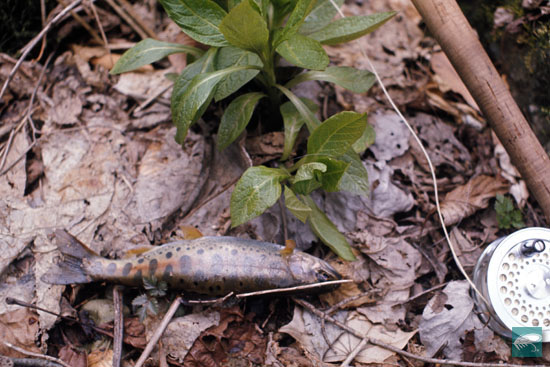
The fish in the creek still had winter colour after spring came in calendar.
Olive and Feeble Drag
I caught the second fish at 10m downstream of the first one. The third one bit the fly at the lower reaches of the bridge. All three fish held the fly deeply in their mouth when I pulled them up. My attempt was a great success! In spite of heavy snow, I looked forward to fishing farther downstream.There was the most attractive pool 50m downstream of the bridge. Whenever I fished this point, fish broke the surface. When I drew near to the pool, the snow fell harder. The bridge at the upper reaches was dimly seen. But I felt warmer probably because I got some catch or the wind died down.
I checked the fly and cast it carefully, standing on the place commanding the pool. The head of the pool formed a gentle current. Lunn’s Particular settled on the head of this current and drifted quietly. Something moved under the fly. A fish rose from the bottom, heading upstream. A yamame trout! When its parr mark on the side was clearly seen, it rushed to the fly, suddenly heading upwards. As I saw the fish from overhead, its large-opened mouth was seen just beyond the fly. At the next moment the fly disappeared, leaving a mild ripple. As soon as I tightened the line, the yamame trout ran downstream.
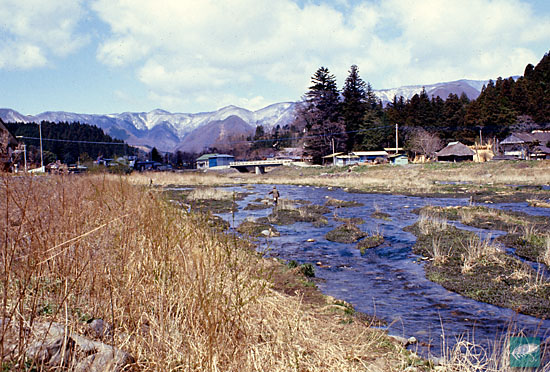
The River Naka in Tochigi Prefecture in April, 1979. On sunny days yamame trout made rises in the wide shallow stream of high water temperature.
It was not a big fish but I did not want my first fish here to fight fiercely near the head of the pool, where another fish could be staying. So I moved downstream, together with the fish.
I pulled the fish up and removed the fly. Then I returned to the head of the pool, expecting the second fish. The second one broke the surface and held the fly in its mouth, as if I had seen the same scene as the first fish. This fish tried to stay at the head of the pool. After I walked downstream I took it away from the place. I laughed at the snowy river with no angler around. Who would have imagined such a big success?
I expected the third fish to break the surface. I changed the sticky fly into a new one and walked upstream. I looked at the head of the pool and found a yamame trout was breaking the surface. It broke the surface slowly to no fly and ate something in the same way as it bit the fly. I stared at the surface and found a tiny thing. At first it looked like a small cream lump but I recognized it as a hatched Olive flowing to me. It faintly moved with its wings feebly flapping and at the next moment the yamame trout broke the surface again to swallow it.
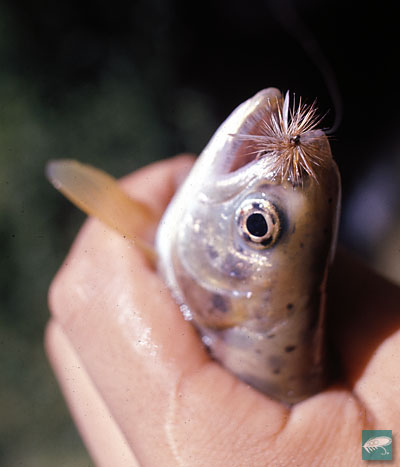
In 1975 Lunn’s Particular was one of the most important flies for yamame trout fishing.
I found that Olives were drifting beyond the heart of the stream, too. Rises started here and there. They were so little rises of only a drop of splash. But I saw everything from overhead. How exciting! There was no other angler about. It’s a golden opportunity, indeed!
I tried to keep myself calm and made the fly drift on the surface in front of me. Soon a yamame trout broke the surface and came to the fly.
“Next one, please.”
Oh, no, my rod swung in the air. Easy catch of 2 fish made me set the hook so carelessly.
So I thought at first. But only a few minutes later I realized that my failure was not made by my careless hook-setting. After setting the hook to no fish many times, I calmed down and watched yamame trout carefully. They broke the surface and turned away a few centimetres before the fly. It was quite natural that I repeatedly failed in setting the hook. Before Olives were hatched, yamame trout bit the fly that was drifting in a rather strange way. However, once a large amount of Olives started flowing down, fish avoided the fly that was drifting in a different way from real creatures.
I never forgot that happening for many years. Even when living creatures were flowing, I wanted yamame trout to bite my fly. I wanted to make my fly drift so effectively. I finally fulfilled my goal 22 years later, in 1994, when I completed Super Dry Leader.
-- To be continued --
- NET SHOP INFORMATION
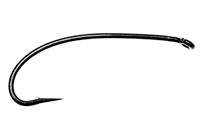
SL6 Black Spey Hooks
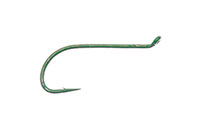
DU3 Limerick Spinner Hooks
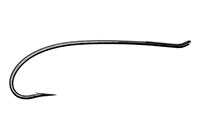
SL4 Single Bartleet Hooks
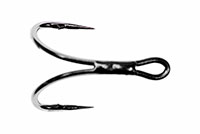
XD1 Tube Fly Double Hooks
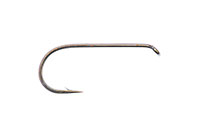
DD2 Flat Perfect Hooks
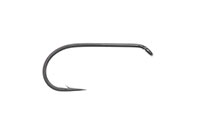
DD1 Black Terrestrial Hooks
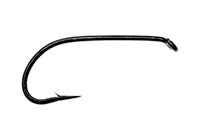
TD4 Old Limerick Wet Hooks
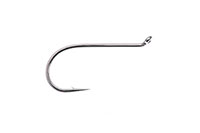
DU1 Silver May Hooks
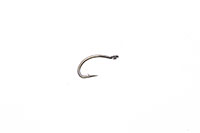
MU1 Flat Midge Hooks
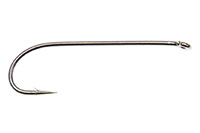
LD3 Long Limerick Hooks
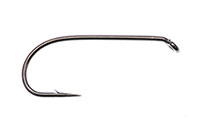
TD2 Summer Sproat Hooks
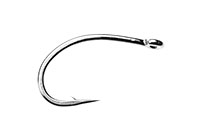
XS1 Tube Single Silver Hooks
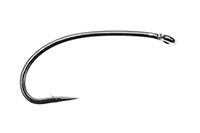
TD6 Siver Sedge Hooks

SL5 Black Spey Hooks

DU3 Limerick Spinner Hooks
- TROPHY CLUB
- FLY SHOW
- EXHIBITION
- MASTERS`
- FLY DRESSING CONTEST Archives
- TRAVELLER Archives
- TACKLE IMPRESSIONS Archives
- ANGLERS` PHOTO GALLERY Archives
- ----------------------------------------------
- トロフィークラブ
- フライショー
- エキシビション
- マスターズ
- フライドレッシング・コンテスト・アーカイヴ
- トラヴェラー・アーカイヴ
- タックル・インプレッション・アーカイヴ
- アングラーズ・フォトギャラリー・アーカイヴ
株式会社サワダ 185-0021 東京都国分寺市南町3-13-4
SAWADA'S INC. 3-13-4 Minamicho, Kokubunji, Tokyo 185-0021, Japan
写真・ドキュメントの無断転載を禁じます。
All the images and documents found on this site are owned by Ken Sawada and may not be used without permission.
But, link to this site is FREE.
Copyright © 2000 - 2025 SAWADA'S INC.. All rights reserved.
SAWADA'S INC. 3-13-4 Minamicho, Kokubunji, Tokyo 185-0021, Japan
写真・ドキュメントの無断転載を禁じます。
All the images and documents found on this site are owned by Ken Sawada and may not be used without permission.
But, link to this site is FREE.
Copyright © 2000 - 2025 SAWADA'S INC.. All rights reserved.
